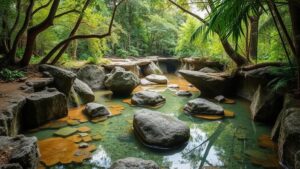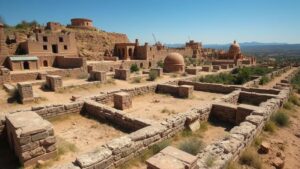Discovering the sacred lotus flowers of Cambodia’s floating villages.
Discovering the Sacred Lotus Flowers of Cambodia’s Floating Villages
In the heart of Southeast Asia lies Cambodia, a nation rich in history and natural beauty. Among its many treasures are the floating villages of the Tonle Sap Lake, where unique ecosystems thrive. A striking element of this region is the sacred lotus flower, an aquatic plant that plays a significant role both ecologically and culturally. This article delves into the enchanting world of Cambodias floating villages and their sacred lotus flowers.
The Floating Villages: A Cultural Overview
The floating villages of Cambodia, primarily located on Tonle Sap Lake, constitute a remarkable way of life. These villages, such as Kampong Phluk and Chong Khneas, are home to thousands of families whose livelihoods depend on fishing, farming, and the unique rhythm of nature. The lake itself expands significantly during the rainy season, creating a dynamic habitat for a myriad of species and a functional living space for its residents.
Historically, the floating villages have relied on water for sustenance dating back centuries. With approximately 1.2 million people living on and around Tonle Sap Lake, the area has become one of the most significant examples of human adaptation to the environment.
The Sacred Lotus Flower: Symbolism and Significance
The sacred lotus flower (Nelumbo nucifera) holds deep cultural and religious significance in Cambodia, symbolizing purity, enlightenment, and rebirth. In Buddhist traditions, which dominate Cambodian culture, the lotus is often depicted in art and literature, representing the journey toward spiritual awakening.
Lotuses thrive in muddy waters and bloom into beautiful flowers, making them a perfect metaphor for the journey through lifes challenges. In Cambodia, the lotus is also a source of food; nearly every part of the plant is utilized:
- Lotus seeds are consumed for nourishment.
- Lotus stems are used in salads and various dishes.
- The flowers are often offered during religious ceremonies.
Ecological Impact and Preservation Efforts
The lotus flowers presence in the floating villages contributes significantly to the local ecosystem. It provides shelter and nourishment for various aquatic creatures while also improving water quality through its natural filtration properties. But, the delicate balance of this ecosystem faces threats from pollution and climate change, leading to an increased urgency for preservation efforts.
Community-based initiatives have emerged to maintain the health of the lake and its surrounding habitats. For example, the Goethe Institute’s “Sustainable Community Development” project focuses on educating local communities about the importance of the lotus flower and its ecological significance. Efforts to protect the lotus habitats not only benefit the environment but also the local economies that rely on this natural resource.
Experiencing the Lotus Flowers: A Visitors Guide
Visiting the floating villages offers a unique opportunity to experience the sacred lotus flowers firsthand. The best time to witness the blooming of the lotuses is during the dry season, between November and March, when the flowers are in full bloom against the stunning backdrop of Tonle Sap Lake. Here are some tips for visitors:
- Join a guided boat tour to learn more about the local culture and the ecology of the lake.
- Visit local markets to sample various dishes made from lotus and related ingredients.
- Participate in community workshops that highlight traditional uses of the lotus flower.
Conclusion: The Lotus as a Living Legacy
The sacred lotus flower of Cambodia’s floating villages serves as a powerful symbol of resilience and beauty amidst adversity. By exploring this unique aspect of Cambodian culture, visitors not only gain insights into local traditions and ecological preservation but also contribute to the sustaining efforts that protect these vital ecosystems.
As you contemplate the journey of the lotus–from root in muddy waters to blooming flower–you are reminded of the interconnectedness of nature, culture, and the human experience. Embrace the opportunity to engage with these sacred flowers and the communities that protect them, and become part of a living legacy that celebrates both the environment and the human spirit.



